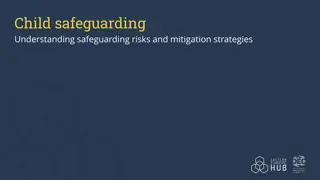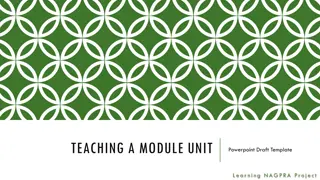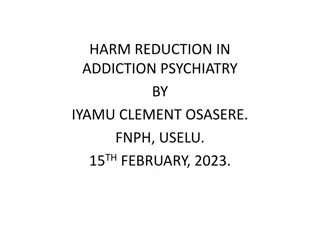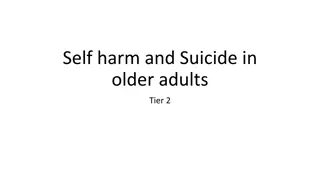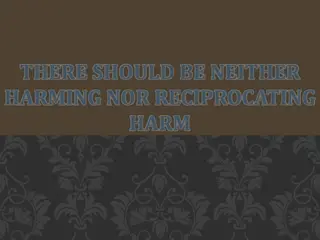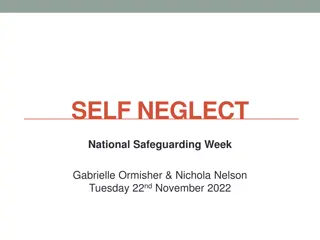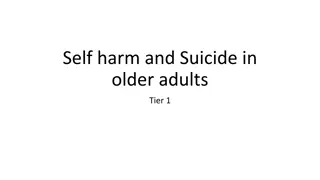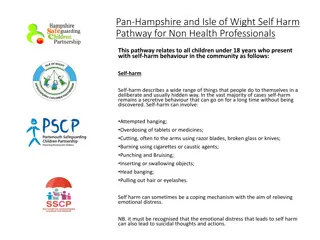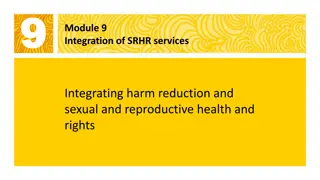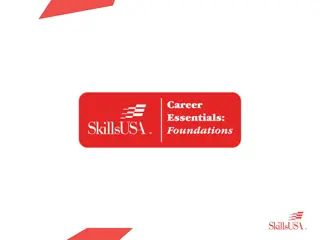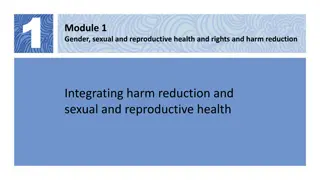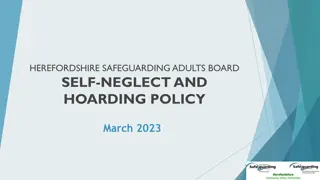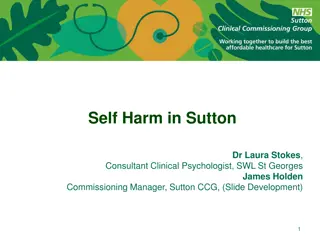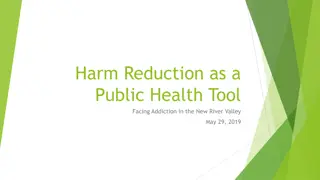Self-Harm: A Comprehensive Overview
Explore the intricacies of self-harm, including deliberate non-fatal acts, common methods, prevalence among females, and its occurrence in teens. Gain insights from subject-matter experts in the field to increase awareness and understanding of this important issue.
Download Presentation

Please find below an Image/Link to download the presentation.
The content on the website is provided AS IS for your information and personal use only. It may not be sold, licensed, or shared on other websites without obtaining consent from the author.If you encounter any issues during the download, it is possible that the publisher has removed the file from their server.
You are allowed to download the files provided on this website for personal or commercial use, subject to the condition that they are used lawfully. All files are the property of their respective owners.
The content on the website is provided AS IS for your information and personal use only. It may not be sold, licensed, or shared on other websites without obtaining consent from the author.
E N D
Presentation Transcript
Introductions Introductions Subject-Matter Experts Kevin Hodgson, Manager of Programs, Hockey Education Reaching Out Society (HEROS Hockey). His 15-year career in the Human Services sector has exclusively focused on marginalized children and youth. He is also a Consulting Trainer for the Centre for Suicide Prevention. Linda Scurr, MEd, counselling program supervisor with Adult Addiction Services Calgary, Addiction and Mental Health (formerly AADAC), Alberta Health Services. As the supervisor of the Calgary AADAC Enhanced Services for Women program Linda was awarded the Premier s Award of Excellence 2005. She is a Consulting Trainer with Centre for Suicide Prevention and has taught suicide intervention training since 1975. Dave MacLeod, MSc RPsych, founding clinical psychologist with Western Psychology Services in Calgary, now the overseer of the WPS co-operative. Dave began work in suicide prevention in the late 1970s as a volunteer with the Distress Centre/Drug Centre and has, since then, worked in a variety of adolescent treatment centres around the world. Dave is a Consulting Trainer with the Centre for Suicide Prevention. Secondary Research Robert Olson, BA, MLIS, Librarian, Centre for Suicide Prevention, provided secondary research for this webinar.
Co Co- -sponsoring Organizations sponsoring Organizations Centre for Suicide Prevention (CSP) Alberta Centre for Injury Control & Research (ACICR) A provincial organization committed to advancing the impact or prevention, emergency response, treatment and rehabilitation of injuries in Alberta. ACICR is part of the School of Public Health, University of Alberta. For more information, visit us at www.acicr.ca An education centre committed to reducing suicide through education: information services, workshops, presentations and now webinars. CSP is a branch of the Canadian Mental Health Association (CMHA). For more information, visit us at www.suicideinfo.ca
The 5 Things We Wish ALL Teachers Knew About The 5 Things We Wish ALL Teachers Knew About SELF HARM and Suicide
What do we mean by Self What do we mean by Self- -Harm ? Harm ? Deliberate acts by a person to physically harm the body Not intended to be fatal Often repeated over time Socially unacceptable (i.e. does not include body piercing, professional tattooing, nail biting, head shaving)
What do we mean by Self What do we mean by Self- -Harm ? Harm ? Methods Cutting Burning Self-Hitting Interfering with wound healing Hair pulling Bone breaking Multiple: (included above) 72% 35% 30% 22% 10% 8% 78%
What do we mean by Self What do we mean by Self- -Harm ? Harm ? 65-85% are females Nearly 15-20% of teens in middle to high school self-harm Average age to begin cutting is 12-15 years old
Fact 1. Self Fact 1. Self- -Harm is not Suicide Harm is not Suicide (but it can BECOME suicide) Intent to Die Outcome High Low Suicide Unintentional Suicide Death Attempted Suicide Self-Harm (Parasuicide) Injury
Fact 2. Self Fact 2. Self- -Harm is LEARNED Harm is LEARNED Past trauma/invalidation Physical or sexual abuse Neglect (the most reliable predictor) Lack of secure attachments No memories of unconditional love as a child
Fact 3. Self Fact 3. Self- -Harm is FUNCTIONAL Harm is FUNCTIONAL 1. AFFECT REGULATION People injure themselves in order to feel better 2. COMMUNICATION People injure themselves in order to send a message to others 3. CONTROL/PUNISHMENT People injure themselves in order to feel a sense of power
Fact 3. Self Fact 3. Self- -Harm is FUNCTIONAL Harm is FUNCTIONAL I came to learn early in life that: If I express my needs in legitimate ways (by talking to others, for instance) my needs won t get met So I need to BEHAVE, and then depend on others to INTERPRET my behavior and react to me.
Fact 4. Self Fact 4. Self- -Harm is CHALLENGING Harm is CHALLENGING First Aid is not enough These individuals need therapy
Fact 4. Self Fact 4. Self- -Harm is CHALLENGING Harm is CHALLENGING Emotional dysregulation: Frequent displays of inappropriate anger Depressive bouts Mood swings Recurrent acts of crisis, drama Intense & unstable relationships (friends, dating partners) Feeling of emptiness & boredom Impulsive with money, substance abuse, sexual relationships, binge eating or shoplifting
Fact 4. Self Fact 4. Self- -Harm is CHALLENGING Harm is CHALLENGING Intolerant of being alone Avoid real or imagined abandonment Uncertainties about identity, self image (more than most teens) See thing in extremes (all good vs. all bad) See themselves as victims of circumstances Take little responsibility for themselves
Fact 5. Self Fact 5. Self- -Harm is MANAGEABLE Harm is MANAGEABLE Don t take it personally Understand your feelings Be supportive without reinforcing the behaviour Acknowledge the pain of the student Take a break
Fact 5. Self Fact 5. Self- -Harm is MANAGEABLE Harm is MANAGEABLE Try not to: Avoid the subject Over-focus on the behaviour itself Ignore attention-seeking behaviour Punish self-harm or use ultimatums Become excessively sympathetic Respond with shock, revulsion or averted gaze Promise confidentiality
Fact 5. Self Fact 5. Self- -Harm is MANAGEABLE Harm is MANAGEABLE Try to: Understand the role of self-harm in the student s life. Focus on the need that underlies the behaviour, not the behaviour itself. Provide distractions if necessary. Offer physical safe space Set limits
Fact 5. Self Fact 5. Self- -Harm is MANAGEABLE Harm is MANAGEABLE Try to: Maintain a predictable and regular schedule Identify a small number of key adults who can be the main contacts Continue to reduce the number of people involved Divide and conquer (dismiss friends and bystanders from the scene of the drama , or remove the student to a private setting)
Fact 5. Self Fact 5. Self- -Harm is MANAGEABLE Harm is MANAGEABLE Maintain awareness of your own feelings do not let feelings guide your decisions. Stand in the middle. Resist temptation to: Love me Feel sorry for me Overvalue me Pity Apologize Over-respond vs. vs. vs. vs. vs. vs. Hate me Reject me Undervalue me Anger Accuse Under-respond
Thanks Thanks for tuning in! More questions for tuning in! More questions? ? Contact us at: Contact us at: csp@suicideinfo.ca csp@suicideinfo.ca Co-sponsored by Centre for Suicide Prevention and Alberta Centre for Injury Control & Research












